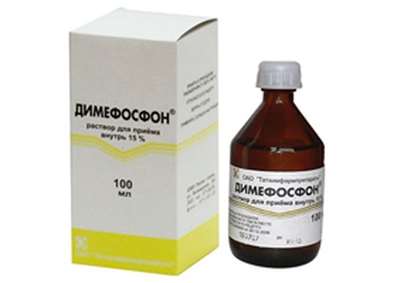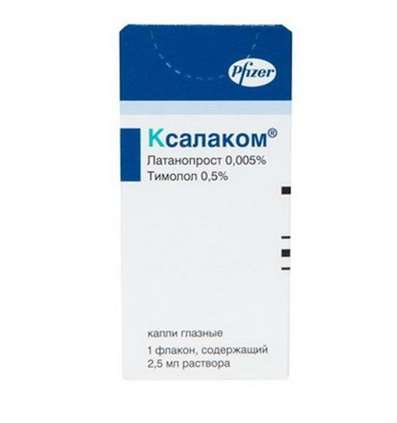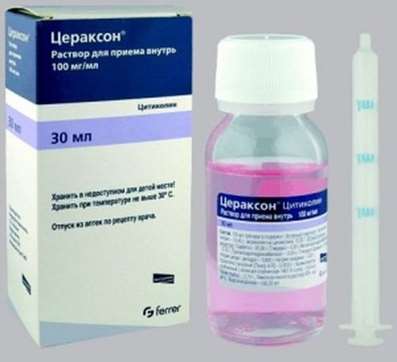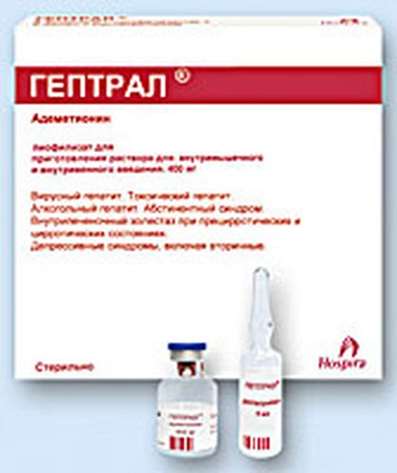Instruction for use: Lopedium
I want this, give me price
Active substance Loperamide
ATX code A07DA03 Loperamide
Pharmacological group
Antidiarrheal drugs
Nosological classification (ICD-10)
E88.9 Metabolic disorders, unspecified
Hypermetabolic conditions, Correction of metabolism in elderly and senile age, Metabolic disease, Violation of metabolic processes, Inadequacy of 3-hydroxyacyl-CoA dehydrogenase, Insufficiency of respiratory chain enzymes, Normalization of metabolic processes in the body
K52.2 Allergic and alimentary gastroenteritis and colitis
Alimentary Colitis, Allergic Colitis, Gastroenteritis alimentary, Gastroenteritis allergic, Allergic diarrhea, Allergic gastroenteropathy, Medicinal gastroenteritis
K59.1 Functional diarrhea
Diarrheal syndrome, Diarrhea, Diarrhea with prolonged enteral feeding through the probem, Prolonged diarrheam Nonspecific diarrhea, Acute diarrhea, Diarrhea, Syndrome of diarrhea, Functional diarrhea, Chronic diarrhea, Diarrhea with an electrolyte balance disorder, Chronic diarrhea, Diarrhea of non-infectious genesis, Diarrhea after a gastroectomy, Diarrhea in children, Persistent diarrhea, Diarrhea (diarrhea), Enterocolitis of non-infectious origin
K90.9 Disruption of intestinal absorption, unspecified
Insufficient absorption of iron from the gastrointestinal tract, Insufficient digestion, Violation of iron absorption in the digestive tract, Impaired absorption of vitamin B1 in the intestine
T66 Unspecified radiation effects
Radiation Disease, Diarrhea radiation, Gastrointestinal syndrome with irradiation, Radiation sickness, Radiation disorders of mucous membranes, Irradiation chronic, Osteoradionecrosis, Acute radiation sickness, Acute and chronic radiation injuries, Acute radiation syndrome with radiation therapy, Subacute and chronic radiation sickness, Radiation Neuropathy, Radiation edema, Radiation damage to the nervous system, Radiation immunodeficiency, Radiation syndrome, Radio-epileleitis, Radiation acute syndrome, State after irradiation, Cytopenia due to previous radiation or chemotherapy, Cytopenia radiation, Cytopenia due to radiation therapy, Cytopenia due to chemotherapy
Y57.9 Adverse reactions in the therapeutic use of medicinal products and medicines, unspecified
Allergic drug reactions, Allergic reactions to drugs, Allergic reactions to medication, Allergic reactions to taking drugs, Allergic reactions to reception of radiocontrast agents, Allergic reactions due to medication, Anaphylactic reactions to medications, Anaphylactic reactions to taking drugs, Hepatotoxic effect of drugs, Idiosyncrasy to drugs, Idiosyncrasy toxic, Drug addiction, Drug-induced leukopenia, Drug-induced liver damage, Medicinal damage of the lungs, Acute allergic reaction to drugs, Toxic reactions to medicinal substances, Allergy medication, Hepatotoxic substances, Diarrhea medication, Drug fever, Medicinal intolerance, Undesirable effects of drugs
Z72.4 Unacceptable diet and bad habits in nutrition
Inadequate nutrition, Irregular nutrition, Unbalanced diets, Dyspepsia due to unusual food or overeating, Long-term dietotherapy, Prolonged or low-calorie diets, Gastrointestinal disorders due to a violation of diet, Binge eating, Food poisoning, Errors in the diet, Compliance with diets, Compliance with a strict diet, Special diets
Z93.2 Presence of ileostomy
Ileostomy
Composition
Capsules 1 caps.
active substance:
loperamide hydrochloride 2 mg
excipients: lactose monohydrate - 127 mg; corn starch - 40 mg; talc - 9 mg; magnesium stearate - 2 mg
hard gelatin shell
body: gelatin - 28.33 mg; iron (III) black oxide (E172) - 0.12 mg; titanium dioxide - 0.35 mg
cap: gelatin - 18.68 mg; iron (III) yellow oxide (E172) - 0.23 mg; the dye blue (E131) - 0.03 mg; iron (III) black oxide (E172) - 0.068 mg; titanium dioxide (E171) - 0.192 mg
Tablets 1 tab.
loperamide hydrochloride 2 mg
excipients: lactose monohydrate - 88.15 mg; calcium hydrophosphate dihydrate - 46 mg; corn starch - 8 mg; sodium starch glycolate - 3.5 mg; colloidal silicon dioxide - 0.6 mg; magnesium stearate - 1.75 mg
Description of the dosage form
Capsules: hard gelatin, capsule contents - white homogeneous powder. The body of the capsules is gray, the lid is dark green.
Tablets: white or almost white round, convex on the one hand, on the other side of the risk, the surface of the tablet is oblique to risk.
pharmachologic effect
Pharmacological action - antidiarrheal, constipational.
Pharmacodynamics
By binding to the opioid receptors of the intestinal wall, it inhibits the release of acetylcholine and PG, thereby reducing the tone and motility of the smooth muscles of the intestine. Slows peristalsis and increases the time of passage of intestinal contents. Increases the tone of the anal sphincter. Contributes to the retention of fecal masses and the reduction of the urge to defecate, reduces the frequency of acts of defecation. The action comes quickly and lasts 4-6 hours.
Pharmacokinetics
Loperamide undergoes first-pass metabolism, resulting in low bioavailability of the drug when taken orally. Tmax - 3-5 hours. Loperamide in trace amounts penetrates the BBB, which has no clinically significant effect. 1/3 of loperamide excreted from the body unchanged, the rest - in the form of intestinal metabolites. Less than 2% of the active substance is excreted unchanged through the kidneys. T1 / 2 - 7–15 h.
Indications
symptomatic treatment of acute and chronic diarrhea of various origins (including allergic, emotional, radiation; when changing diet and quality of food, metabolic disorders and absorption; drug, with the exception of antibiotic-associated diarrhea);
stool regulation in patients with ileostomy.
Contraindications
hypersensitivity to loperamide and / or any of the components of the drug;
lactase deficiency, lactose intolerance, glucose-galactose malabsorption;
acute dysentery;
bacterial enterocolitis caused by Salmonella, Shigella and Campylobacter;
acute pseudomembranous enterocolitis (diarrhea with antibiotics);
ulcerative colitis in the acute stage;
intestinal obstruction (including in cases when suppression of intestinal motility is to be avoided due to the risk of severe consequences, such as megacolon or toxic megacolon);
pregnancy (I term);
lactation period;
children's age up to 6 years.
With care: liver failure.
Use during pregnancy and lactation
The use of the drug in the first trimester of pregnancy is contraindicated. Before using the drug during pregnancy (II and III trimesters) and lactation, you should consult with your doctor. Despite the absence of indications of teratogenic or embryotoxic effects, during pregnancy, the drug can be prescribed only if the intended benefit of therapy for the mother outweighs the potential risk to the fetus.
The drug is released in small quantities into breast milk, so the use of the drug during lactation is contraindicated.
Side effects
According to the WHO, adverse reactions are classified according to their frequency of development as follows: very often (≥1 / 10); often (≥1 / 100, <1/10); infrequently (≥1 / 1000, <1/100); rarely (≥1 / 10000, <1/1000) and very rarely (<1/10000); frequency is unknown - according to the available data it was not possible to establish the frequency of occurrence.
On the part of the immune system: rarely - hypersensitivity, anaphylactic shock.
On the part of the nervous system: often - headache, dizziness; infrequently - drowsiness; rarely - loss of consciousness, stupor, depressed level of consciousness, hypertension, impaired coordination.
From the senses: rarely - miosis.
On the part of the digestive system: often - constipation, flatulence, nausea; infrequently - pain or discomfort in the abdomen, dry mouth, vomiting, indigestion, dyspepsia; rarely - intestinal obstruction, megacolon, glossary, abdominal distension.
On the part of the urinary system: rarely - urinary retention.
On the part of the skin and subcutaneous tissues: infrequently - a rash on the skin; rarely, bullous rash (including erythema multiforme, toxic epidermal necrolysis and Stevens-Johnson syndrome), angioedema, urticaria, pruritus.
Other: rarely - fatigue.
Interaction
While taking loperamide and inhibitors of P-glycoprotein, CYP3A4 or CYP2C8 (quinidine, ritonavir, itraconazole, gemfibrozil, ketoconazole), plasma levels of loperamide may increase.
With the simultaneous use of loperamide and desmopressin for oral use, it is possible to increase the plasma level of the latter.
Drugs with similar pharmacological properties may enhance the action of loperamide; drugs that enhance the transit of food through the digestive tract, to weaken its effect.
Dosage and administration
Inside To swallow tablets and capsules without chewing, washing down with 100 ml of water.
Acute diarrhea
Adults: initially prescribed in 2 caps / tab. (4 mg) per day, then 1 capsule / tab. (2 mg) after each bowel movement in the case of loose stools.
Children from 6 to 18 years: initially designate 1 caps. / Table. (2 mg) per day, then 1 capsule / tab. (2 mg) after each bowel movement in the case of loose stools.
Chronic diarrhea
Adults: initially prescribed in 2 caps / tab. (4 mg) per day, then 1 capsule / tab. (2 mg) after each bowel movement in the case of loose stools.
Children from 6 to 18 years: initially designate 1 caps. / Table. (2 mg) per day, then 1 capsule / tab. (2 mg) after each bowel movement in the case of loose stools. This dose is then individually adjusted so that the stool frequency is 1-2 times a day, which is usually achieved with a maintenance dose of 1 to 6 caps / tab. in a day.
The maximum daily dose for acute and chronic diarrhea for adults is 16 mg (8 caps / tab.). In children, the maximum daily dose is calculated on the basis of body weight (3 caps / tab. 20 kg) to 8 caps / tab. in a day.
Elderly patients and renal failure. Dose adjustment is not required.
After normalization or in the absence of stool more than 12 hours, treatment should be discontinued.
The duration of treatment is 2 days. If symptoms persist for more than 24 hours, you should immediately consult a doctor.
Long-term use of the drug is possible only under the supervision of a physician.
Overdose
Symptoms: CNS depression (stupor, impaired coordination, drowsiness, miosis, muscle hypertonus, respiratory depression), urinary retention, intestinal obstruction.
Treatment: antidote - naloxone; Considering that the duration of loperamide is longer than that of naloxone, it is possible to reintroduce the latter. Medical supervision is required for at least 48 hours.
special instructions
Lopedium® is used for the symptomatic treatment of diarrhea. In the case of establishing the cause of the disease should be directed therapy.
In patients with diarrhea, especially in children, hypovolemia and a decrease in the content of electrolytes are possible. In such cases, electrolyte loss and rehydration are urgently needed.
If there is no improvement in acute diarrhea after using the drug for 48 hours, you should consult a doctor.
If abdominal distention develops in the treatment of diarrhea in AIDS patients, the drug should be promptly discontinued. In very rare cases, patients with a diagnosis of AIDS suffering from infectious colitis may be constipated with a risk of toxic megacolon.
Lopedium® should be used with caution in liver failure in order to avoid toxic damage to the central nervous system.
If the treatment develops constipation, bloating or intestinal obstruction, the drug should be discontinued.
The instruction for patients with a diabetes mellitus: each capsule / tablet corresponds to 0,01 XE.
Influence on ability to steer vehicles and work with mechanisms. During the period of treatment with Lopedium®, care must be taken. When using the drug may cause feelings of fatigue, dizziness, drowsiness.
Release form
Capsules, 2 mg. Packaged in a PVC / aluminum foil or polypropylene / aluminum foil blister, 10 pcs. 1, 2, 3 or 5 bl. in a carton box.
Tablets, 2 mg. Packaged in PVC / aluminum foil or propylene / aluminum foil, 10 pcs. 1, 2, 3 or 5 bl. in a carton box.
Pharmacy sales terms
Over the counter.
Storage conditions
At a temperature not higher than 25 ° C.
Keep out of the reach of children.
Shelf life
5 years.
Do not use after the expiration date printed on the package.

 Cart
Cart





